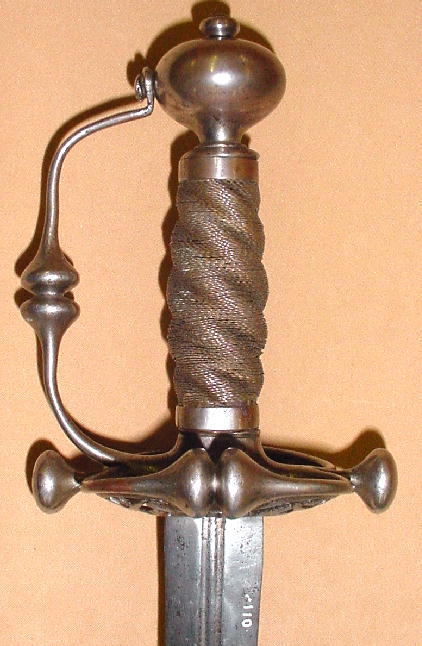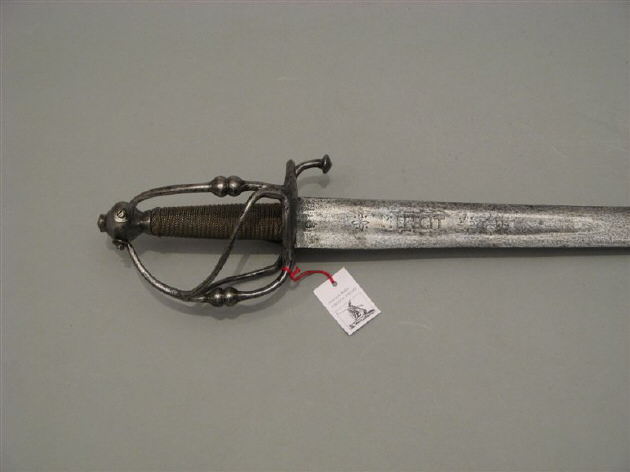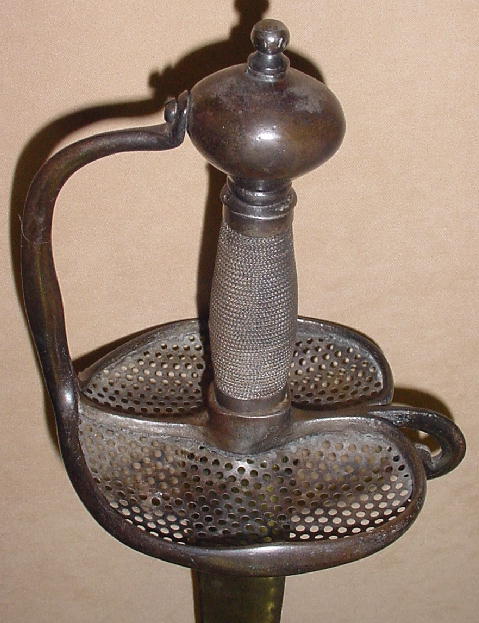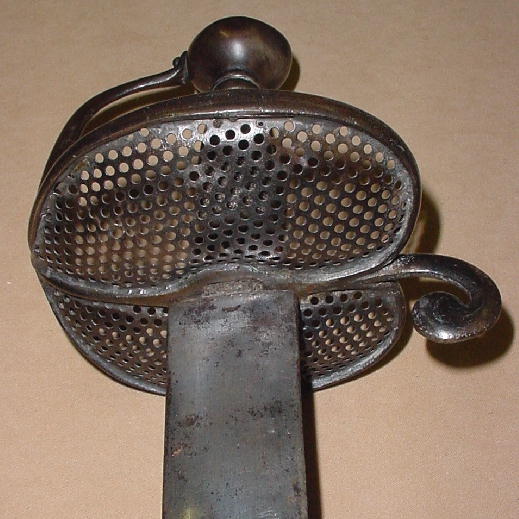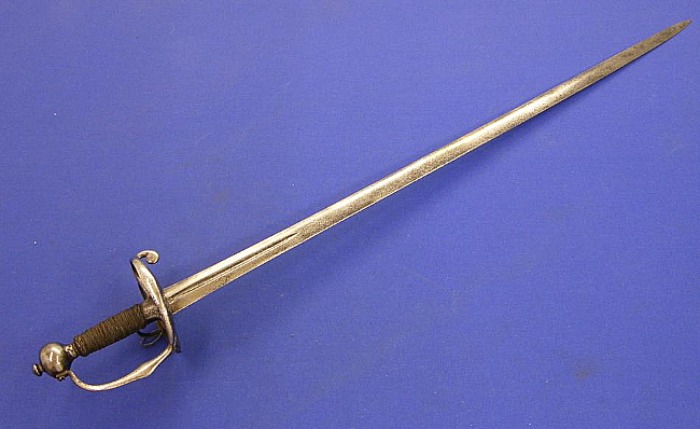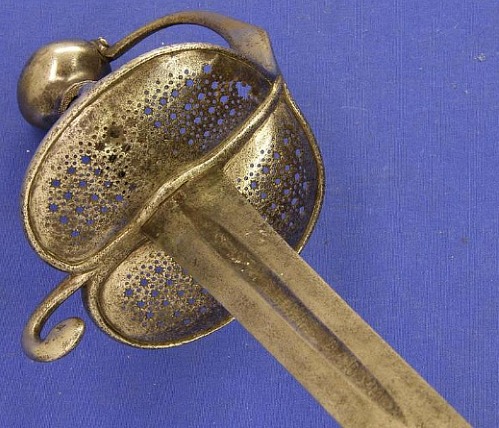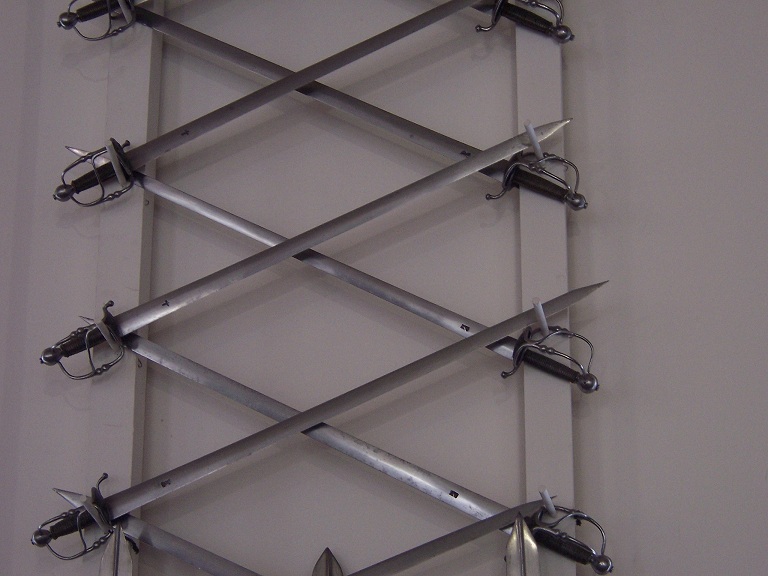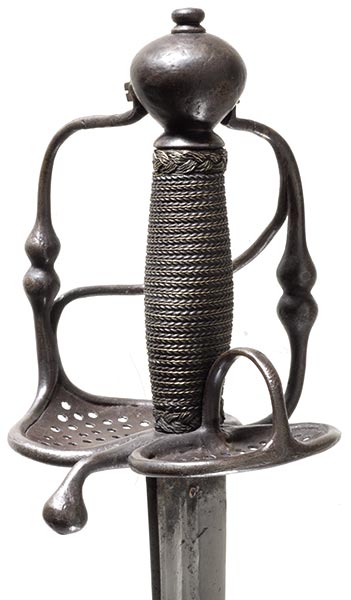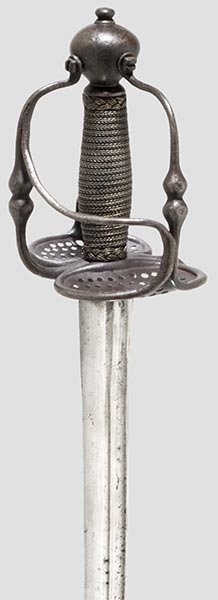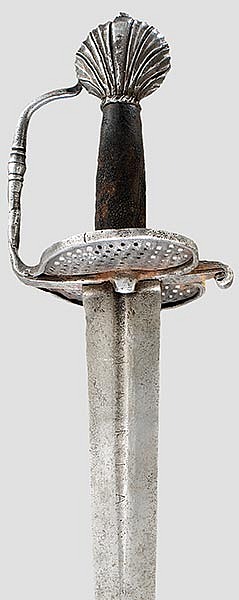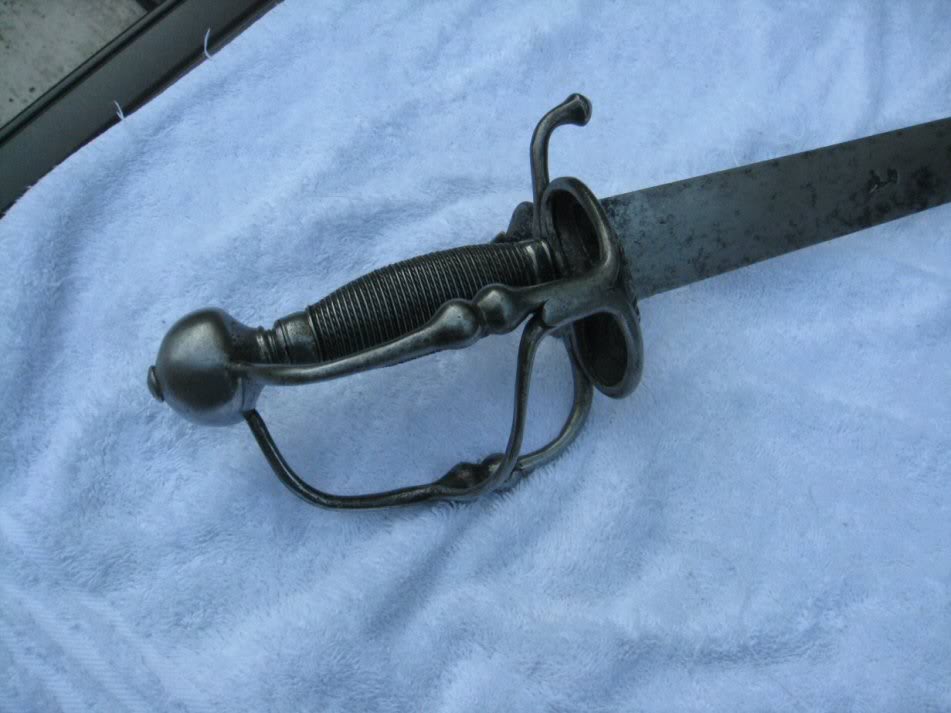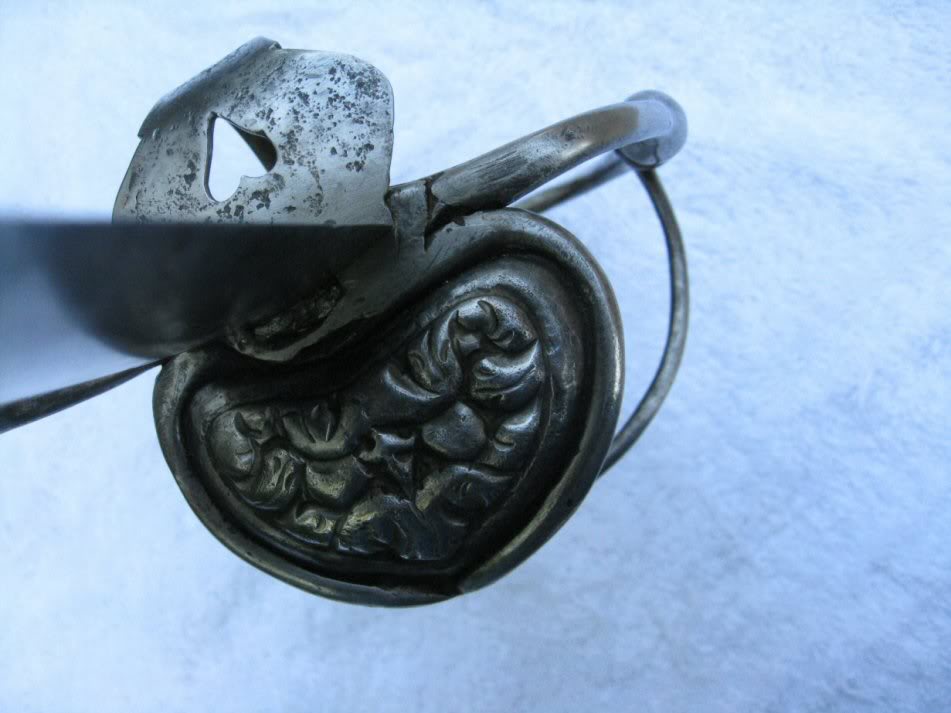Posts: 268 Location: Metro D.C.
Tue 15 Mar, 2011 6:51 am
Just lurking but since you requested a translation from the German for
Haudegen- hitting sword. reference is to a sword used to cut such as a cut and thrust sword. Anothere reference is to a person with combat experience but that does not apply in this case (btw I am a bit fascinated by swords with thumb rings such as
Schiavona)
Compiled and translated from the German Duden
Meanings:
[1] in the sword used in the 17. century with two cutting edges for hitting and cutting (cut and thrust) (oddly enough another dictionary specified that it only had one main edge and only a partial back edge like a backsword)
[2] carried over from the weapon: a soldier with fighting experience, who thourgh his ways exempliefies his expereince... i.e. beligerent
Origin
Compositum out of the Deverbativ to the Verb hauen (Subtraktionsfuge Ą-enď) and the Substantiv Degen
